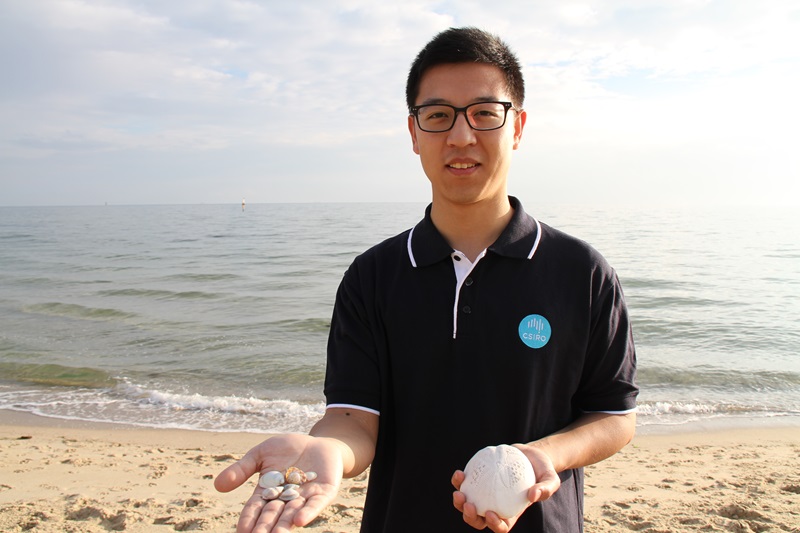
Our materials scientist, Dr Kang Liang, was inspired by the natural biomineralisation process of seashells.
Vaccination is one of the most powerful and effective ways of protecting the population against infectious disease. Yet, getting vaccines to everyone who needs them, particularly in developing countries, continues to be a massive challenge.
But what if we could make vaccines more robust so that they can be more easily and cost-effectively transported?
An exciting breakthrough discovery by our scientists has the potential to make life-saving vaccines more accessible by putting an end to the need for refrigeration. And, as with many problems in science, the solution has come from nature.
Thinking outside the square, and inside the shell
A key challenge to vaccine delivery in developing countries is that they often need to be transported over long distances, via multiple transportation modes and through extreme temperatures to reach everyone who needs them.
Maintaining the ideal ‘cold chain’ temperature so that the vaccines remain intact can involve a series of refrigerated trucks and ice-cooled ‘esky’ carriers and is a costly and somewhat risky exercise.
Taking a cue from nature, we’ve come up with a protective seashell-inspired capsule that could cost-effectively and reliably preserve the key active ingredients in vaccines.
It mimics a process called biomineralisation where sea urchins grow a hard, protective shell to safeguard their fragile tissue inside. Applying this concept, has led to a molecular-scale shell that grows around and protects fragile biomolecules such as proteins and enzymes.
For a few dollars at most per dose, our shell could overcome the need to refrigerate vaccines and reduce the cost of delivery. It could preserve them and extend their shelf-life when exposed to hostile environments, such as extreme temperatures, pressure, pollution and bacteria.
The cost is minimal given vaccines can be valued for up to hundreds of dollars a vial. Our team believes that developing the technology at a commercial scale could see the cost of the technology reduced even further.
The shell is made of an extremely porous material called metal organic frameworks (MOFs) and has a flexible and customisable cage-like structure.
Like a sea urchin has pores, the MOF shell has tiny holes that allow it to trap and then release the biomolecules.
Not only could the shell be used to protect vaccines, it could also pave the way to developing new, more targeted drugs, better consumer products such as more efficient laundry washing powder, and improve chemical, food and water processing.
These are products that could enhance healthcare and the everyday lives of people around the world.
Our next step is to partner with companies to apply the technology in pharmaceuticals, healthcare, manufacturing, and chemical, food and water processing.
Companies interested in developing the shell technology should contact enquiries@csiro.au. The full paper can be accessed at Nature Communications.

